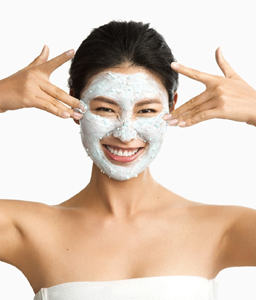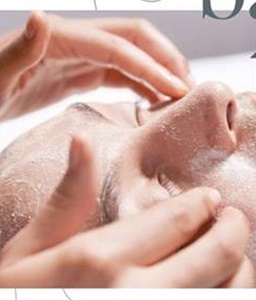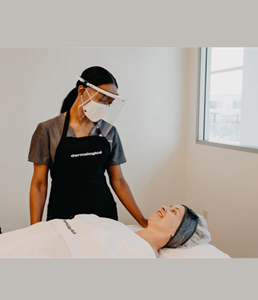
Our skin endures a lot. Every day, natural and environmental triggers work to change its structure from inside and out – speeding up the aging process and resulting in uneven skin tone, hyperpigmentation, fine lines, wrinkles and a loss of elasticity.
Let’s take a more detailed look at the causes of premature aging and hyperpigmentation.
Premature Aging
As we age, our skin undergoes structural changes that affect its appearance. These changes can be broken down into two categories: intrinsic (natural) aging, which is controlled by genetics and health conditions; and extrinsic (environmental) factors like pollution and damaging UV rays. Lifestyle choices like diet and smoking can also impact the skin’s structure. Over time, these environmental and lifestyle factors lead to the accumulation of molecular damage in the skin. This affects the skin’s integrity – ultimately resulting in fine lines and wrinkles.
There are three primary biochemical reactions within the skin that lead to structural changes and premature aging.
- Reactive Oxygen Species (ROS): Generated by aggressors such as UV rays and pollution, ROSs (also known as free radicals) can damage cell structures – causing wrinkles over time and compromising the skin’s ability to repair itself. ROSs also destroy lipids and cause inflammation.
- Matrix Metalloproteinases (MMP): MMPs are enzymes activated by UV exposure and other stress conditions in the skin, such as inflammation. They contribute to the breakdown of collagen and inhibit new collagen formation.
- Reactive Oxygen Species (ROS): Formed by a reaction between sugar (e.g. glucose) and proteins (e.g. collagen), AGEs contribute to the cross-linking of protein fibers, which over time results in a loss of elasticity.
Together, these processes can cause uneven pigmentation, wrinkles, loss of elasticity and other signs of aging.
Hyperpigmentation and Post-inflammatory Hyperpigmentation (PIH)
Changes in the skin’s integrity can lead to more than wrinkles; they can also affect the skin’s color. This hyperpigmentation can be caused by several factors. The one thing that they all have in common is the irregular production of melanin (the brown or reddish pigment in skin). Here’s a quick-reference guide to each form of hyperpigmentation.
UV Exposure
The amount of melanin in our skin is determined by genetics – but exposure to UV radiation stimulates the production of additional melanin, eventually resulting in hyperpigmentation. This is often referred to as “age spots” or “liver spots”; and commonly appear on the forehead, cheeks, hands and other areas frequently exposed to the sun. Ninety percent of people will have sun-induced age spots by the time they’re 60; these are harmless, but they contribute to the overall appearance of aging.
Pollution
Environmental pollutants like ozone can deplete the skin’s naturally-occurring antioxidants, leading to free radical damage. Polycyclic Aromatic Hydrocarbons (PAHs) are the most widespread of organic pollutants (mainly from residual wood burning, auto exhaust, even cigarette smoke)—studies have suggested a strong correlation between these air pollutants and induced skin pigmentation. This may appear as irregular brown patches on the forehead, cheeks, nose, upper lip, chin or jawline.
Post-inflammatory Hyperpigmentation (PIH)

Any form of trauma on the skin (from acne lesions, infections, or injuries for example) that causes inflammation can result in PIH. The inflammation process triggers melanocytes (melanin-producing cells) to distribute melanin unevenly, resulting in discolored marks on the skin. Over time, if the skin is protected from further provocation, the condition may resolve by itself.
Historically, skin damage including hyperpigmentation, fine lines and wrinkles, loss of elasticity and a dull appearance would occur and then we would attempt to reverse it – but today, advanced technology and powerful antioxidants like Vitamin C enable us to stop the biochemical reactions that trigger these structural changes, halting skin damage at its source.
Photography: Courtesy of Dermalogica/Shutterstock







